Introduction
Applied Behavior Analysis (ABA) therapy stands as a pivotal support for individuals with Autism Spectrum Disorder (ASD). This scientifically validated approach delves into understanding and modifying behavior through reinforcement strategies. By breaking down complex skills into manageable tasks, ABA therapists empower children with ASD to acquire essential life skills, enhance communication, and foster social interactions.
The individualized nature of ABA therapy ensures that each child receives tailored interventions meeting their specific needs, bolstering their development and integration into daily activities. As Dr. David (Dan) R. Offord, a renowned child psychiatrist, emphasized, ensuring children and youth with disabilities have well-supported participation in school, home, and leisure activities is crucial for mental health and equity. This approach not only recognizes their unmet needs but also values the assets they bring to their communities.
ABA therapy's effectiveness is further underscored by consistent monitoring and goal setting, as highlighted by Board Certified Behavior Analysts (BCBAs). They assess and set specific, measurable goals for each child, ensuring flexibility to accommodate diverse family needs and schedules. The focus remains on the child, but the family's well-being is equally prioritized.
The principles of applied behavioral science, which underpin ABA, aim to solve real-world problems by understanding complex human behaviors. This method isn't limited to any age group or disability; it promotes learning and enhances performance universally. By fostering a supportive and nurturing environment, ABA therapy not only improves interventions but also promotes emotional well-being, leading to better outcomes for children with autism and ADHD.
The Role of ABA Therapy in Autism Spectrum Disorder
Applied Behavior Analysis (ABA) therapy stands as a pivotal support for individuals with Autism Spectrum Disorder (ASD). This scientifically validated approach delves into understanding and modifying behavior through reinforcement strategies. By breaking down complex skills into manageable tasks, ABA therapists empower individuals with ASD to acquire essential life skills, enhance communication, and foster social interactions.
The individualized nature of ABA therapy ensures that each individual receives tailored interventions meeting their specific needs, bolstering their development and integration into daily activities. As Dr. David (Dan) R. Offord, a renowned psychiatrist for young people, emphasized, ensuring children and youth with disabilities have well-supported participation in school, home, and leisure activities is crucial for mental health and equity. This approach not only recognizes their unmet needs but also values the assets they bring to their communities.
ABA therapy's effectiveness is further underscored by consistent monitoring and goal setting, as highlighted by Board Certified Behavior Analysts (BCBAs). They evaluate and establish specific, measurable objectives for each individual, ensuring flexibility to accommodate various household needs and schedules. The emphasis stays on the young one, but the household's welfare is also given equal importance.
The principles of applied behavioral science, which underpin ABA, aim to solve real-world problems by understanding complex human behaviors. This method isn't limited to any age group or disability; it promotes learning and enhances performance universally. By cultivating a supportive and nurturing atmosphere, ABA therapy not only enhances interventions but also encourages emotional well-being, resulting in improved outcomes for youngsters with ADHD.
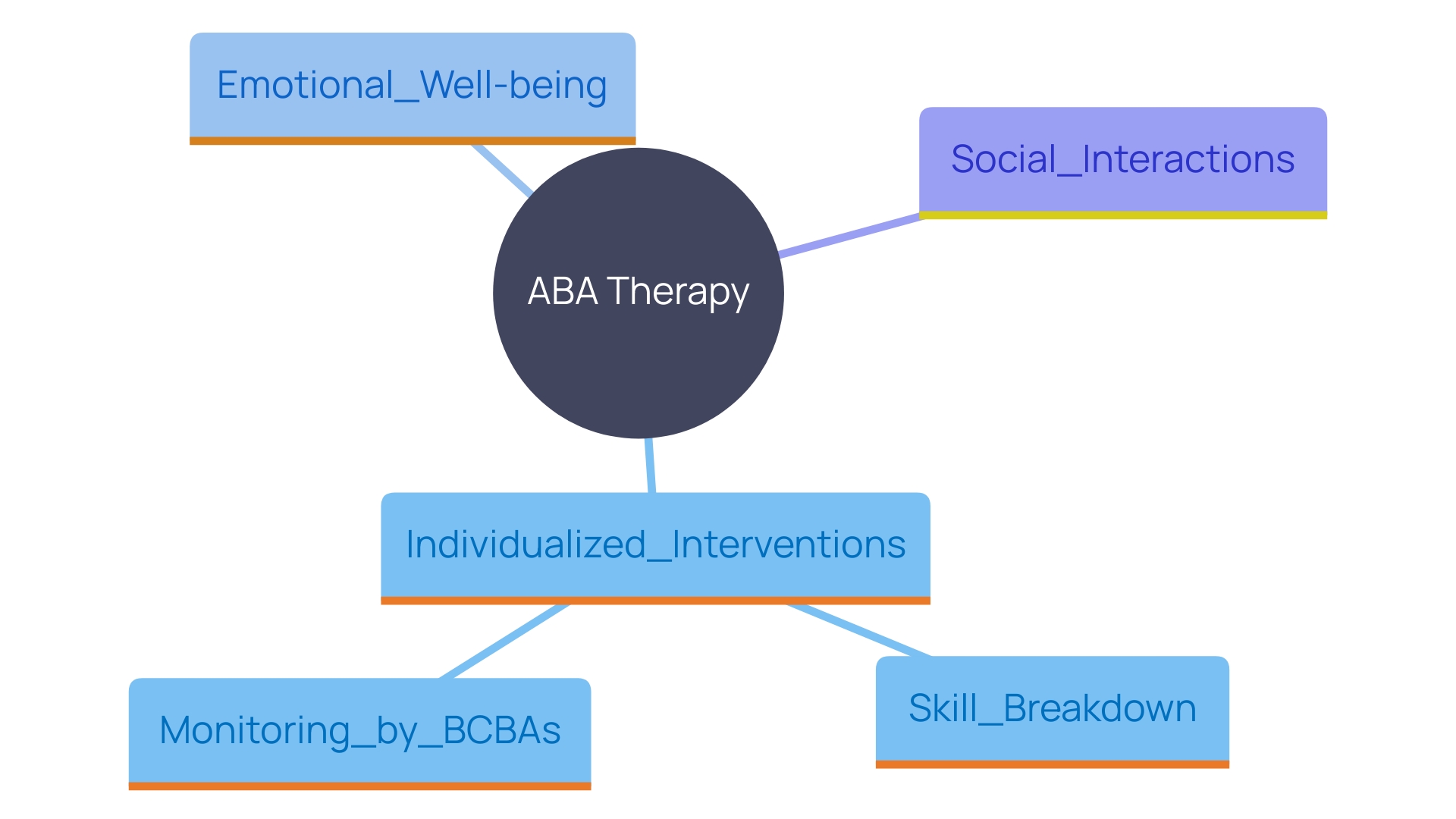
Key Features of Grateful Care ABA Services
Grateful Care ABA provides a variety of customized services for young individuals with developmental disorders and their caregivers, highlighting the importance of fostering supportive and nurturing settings. At the core of their approach are personalized care plans developed through comprehensive assessments by Board Certified Behavior Analysts (BCBAs). These plans are flexible and evolve as the individual progresses, ensuring that interventions remain relevant and effective.
A collaborative approach is integral to Grateful Care ABA's philosophy, involving parents, therapists, and educators to form a cohesive support system. This holistic perspective is crucial for fostering a nurturing environment for growth. Dr. Celina Benavides, a developmental psychologist, underscores the importance of flexible support systems: “Families have different needs and schedules, and flexibility is key to providing effective support. It's not just about the child; it's about the family too.”
Moreover, the emphasis on a collaborative approach aligns with the principles advocated by the Interagency Autism Coordinating Committee (IACC), which highlights the need for coordinated efforts across various stakeholders to enhance autism services. This collaborative effort ensures that individuals with autism and their families receive well-rounded support, ultimately contributing to their overall well-being and development.
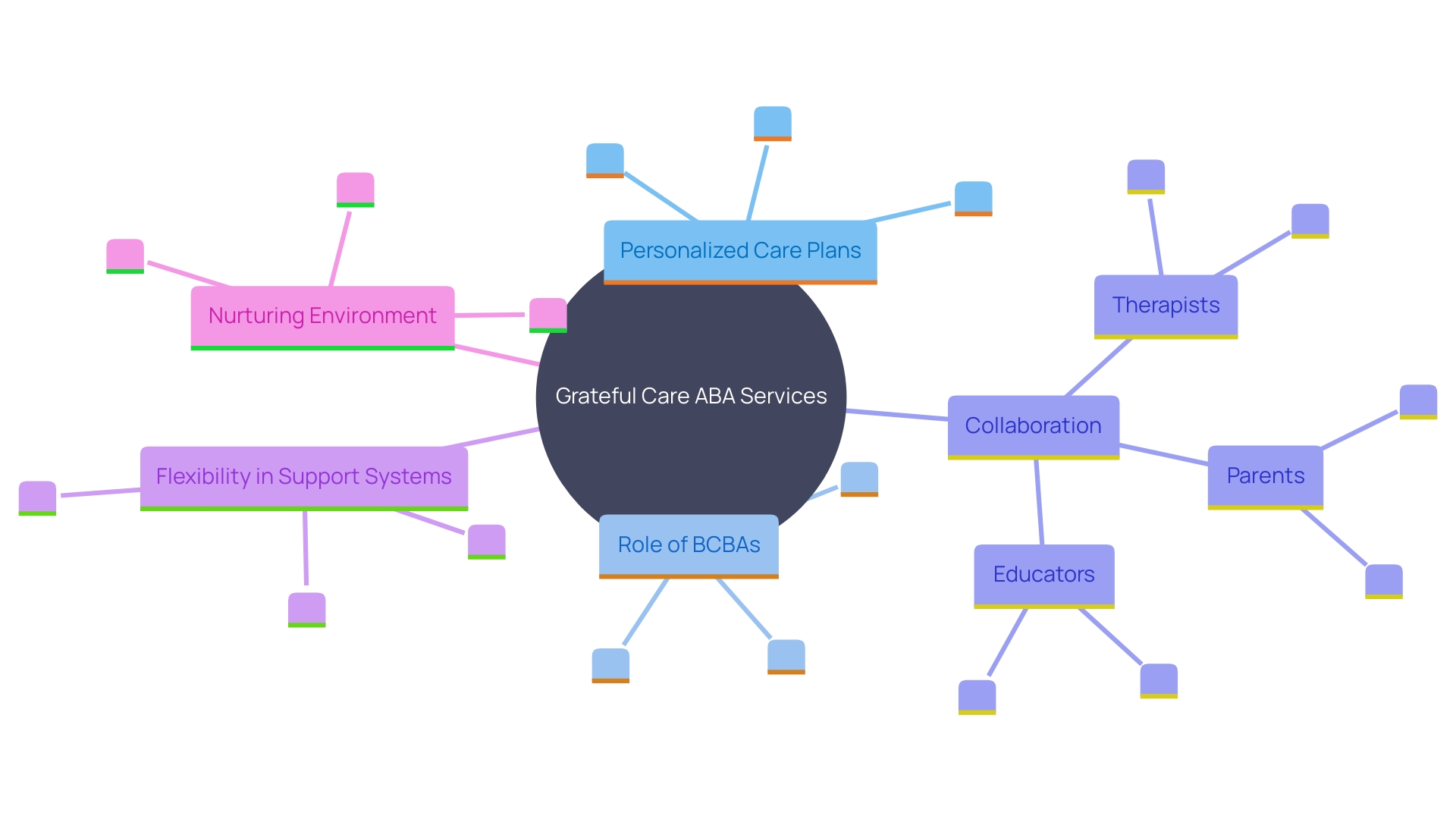
The Impact of Customized Care Plans on Therapy Success
Creating customized care plans is essential for successful ABA therapy. These plans are customized to each individual's unique strengths, challenges, and preferences, enabling targeted interventions that address specific needs. By focusing on individualized goals, such as enhancing communication skills, reducing challenging behaviors, or improving social interactions, therapists can achieve meaningful progress.
The importance of individualized care is underscored by the Council of Autism Service Providers (CASP), which emphasizes that ABA must be implemented at the highest quality to be effective. Regular evaluations and updates to care plans ensure that therapy aligns with the young person's evolving needs, leading to higher success rates.
Engaging parents as active partners in the process is crucial. Building trust through clear communication and active listening reassures parents that their concerns are valued. This collaborative approach empowers parents and caregivers to support their offspring's development and well-being.
Dr. David R. Offord, a renowned psychiatrist for young patients, highlighted the significance of fair and equitable support for individuals with disabilities. Ensuring that children with developmental disorders and co-occurring emotional and behavioral problems are included in meaningful social participation is a cornerstone of mental health.
Moreover, federal initiatives like the Interagency Autism Coordinating Committee (IACC) aim to enhance coordination and communication in research and services related to developmental disorders. By nurturing collaborations among diverse contributors, including households and service providers, the IACC seeks to improve the overall efficiency of care for individuals on the spectrum.
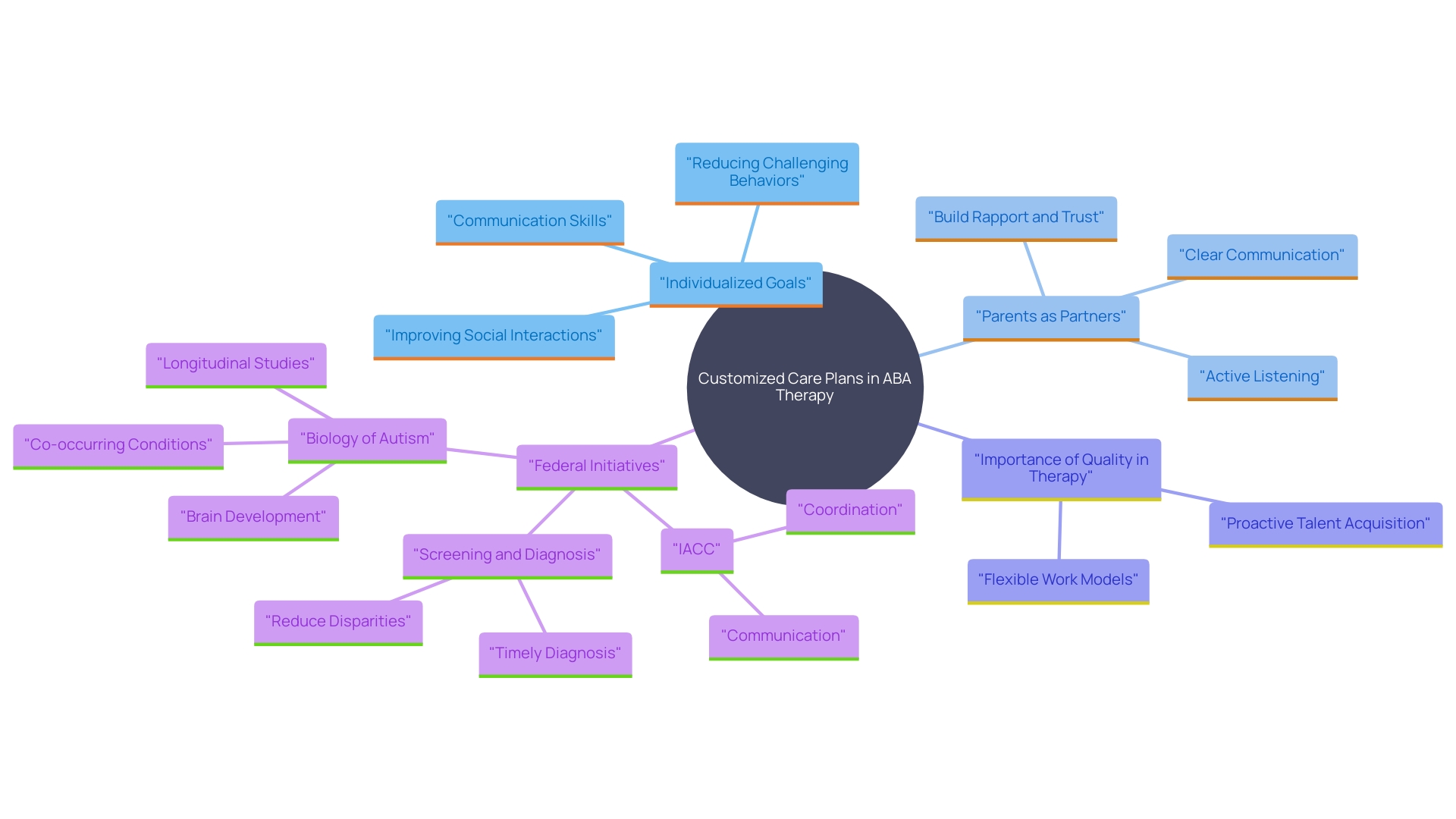
Collaboration with Schools and Families for Holistic Development
Collaboration is the cornerstone of supporting a young person with autism effectively. Grateful Care ABA promotes a strong partnership between therapists, families, and schools, creating a cohesive support system. This unity ensures that skills are consistently reinforced across various settings, aiding in the generalization and retention of learned behaviors. Regular communication among all parties keeps everyone aligned, allowing challenges to be addressed collaboratively and successes to be celebrated together. As Dr. David Offord noted, “Engaged, peaceful and well-supported participation of children and youth with disabilities in the major school, home, and leisure domains of their lives is a fundamental determinant of mental health.” This holistic approach not only enhances the child’s overall development but also ensures they are well-prepared for the complexities of daily life.
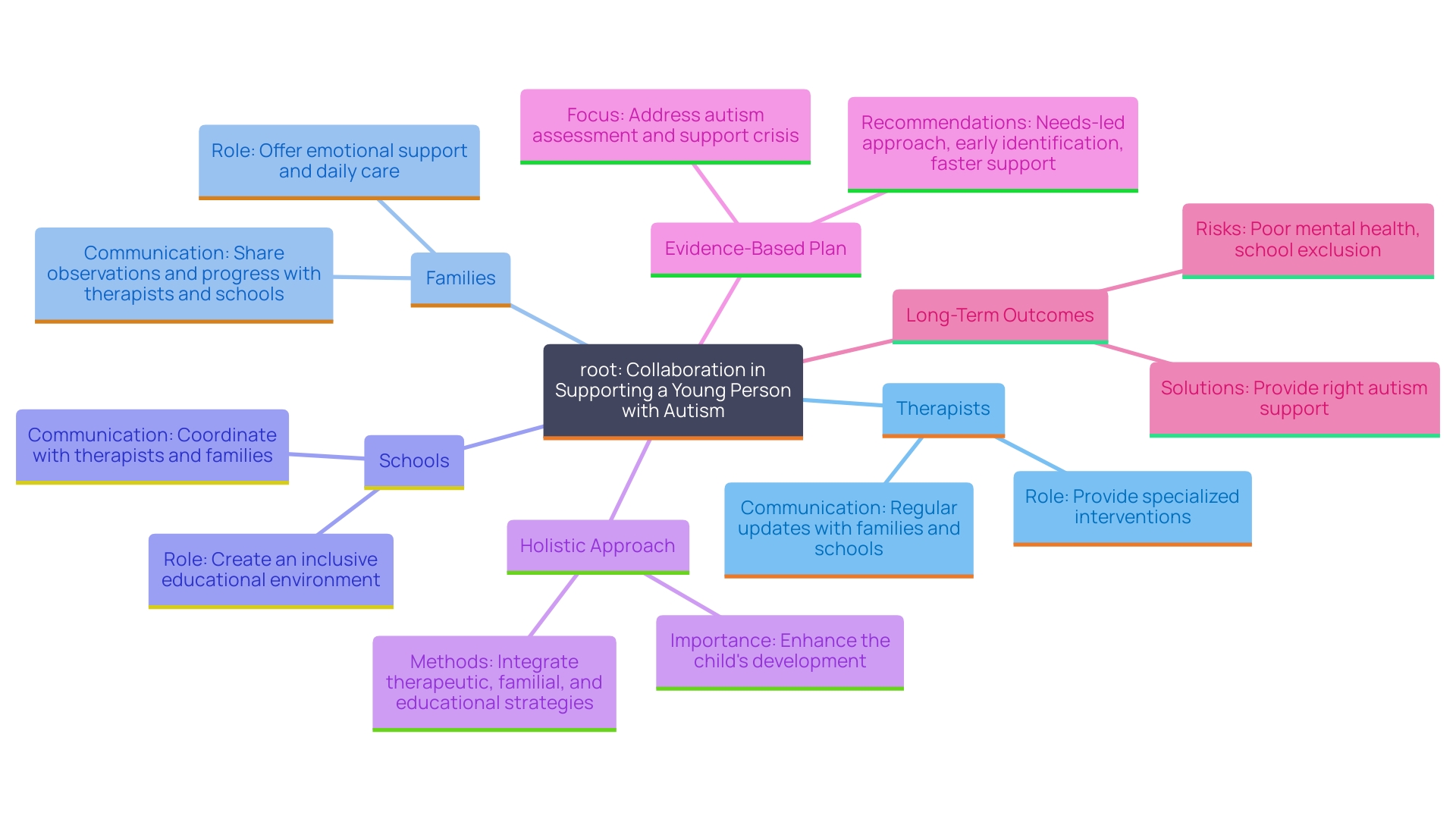
The Importance of Board-Certified Therapists in ABA Therapy
Board-Certified Behavior Analysts (BCBAs) are the cornerstone of effective ABA therapy, ensuring that interventions are both ethical and evidence-based. These professionals undergo extensive training to analyze behaviors and implement strategies that promote positive outcomes. Grateful Care ABA is committed to hiring highly qualified BCBAs who prioritize continuous education, staying abreast of the latest research and guidelines.
The Council of Autism Service Providers recently released updated ABA Practice Guidelines, highlighting the necessity of high-quality implementation for effective treatment of individuals on the spectrum. CEO Lorri Unumb emphasized, “ABA is a highly effective treatment for autism. But it has to be correctly implemented at the highest quality.” This underscores the importance of employing dedicated BCBAs who adhere to these standards.
Moreover, Doreen Granpeesheh, founder of the Center for Autism and Related Disorders, noted the evolving needs of BCBAs, emphasizing the value of flexible work models to attract top talent. Grateful Care ABA's commitment to ongoing professional development ensures that families receive the highest standard of care, aligning with the latest industry practices and research advancements.
"Dr. David Offord, a renowned psychiatrist for young people, once remarked, 'I do not mind if my children are in a race as long as the race is fair.' Ensuring fair and supportive environments for young individuals with disabilities is crucial.". 'Grateful Care ABA's approach, supported by skilled BCBAs, strives to create equitable opportunities for all youth, fostering their mental health and overall well-being.'.
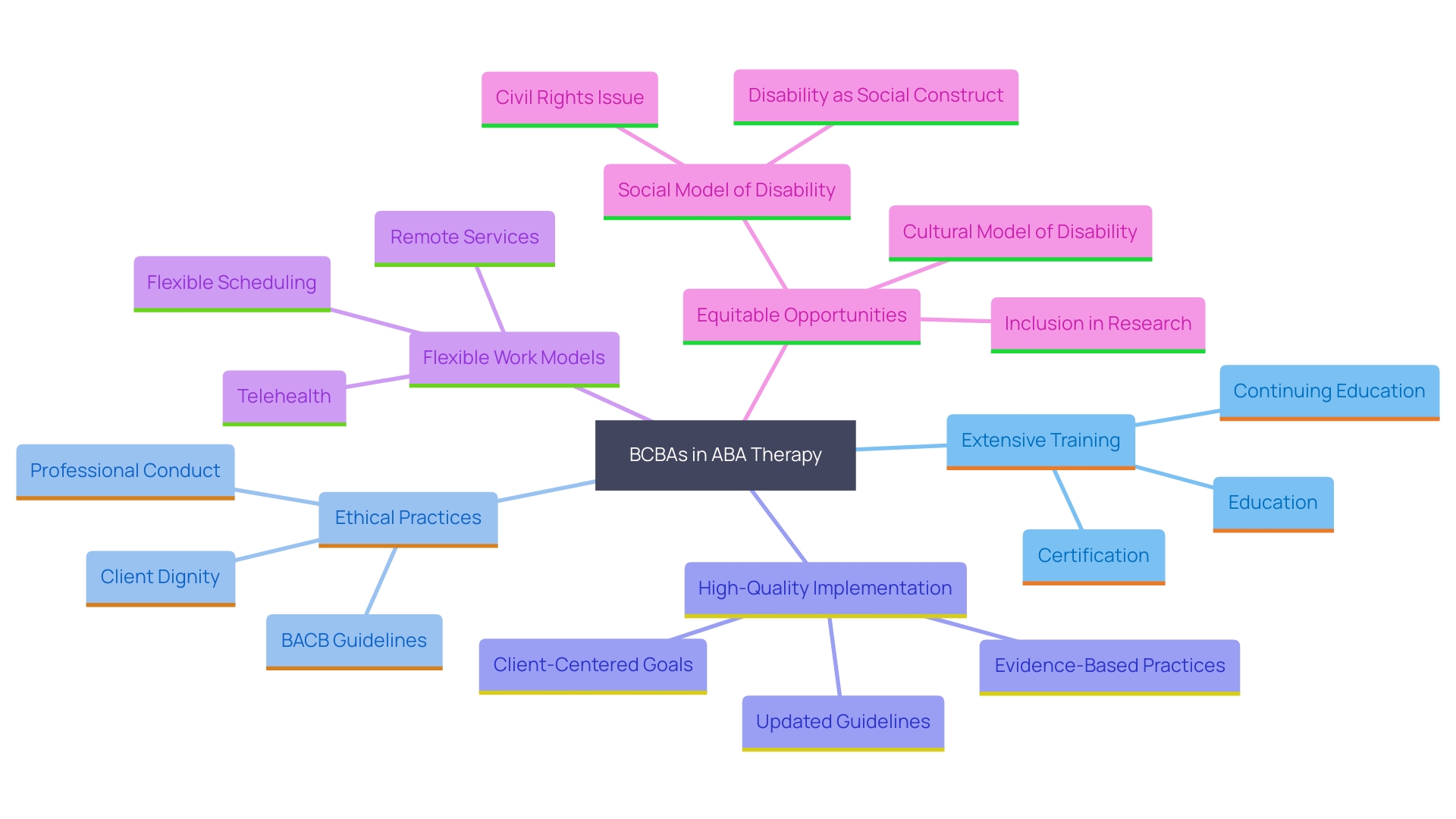
Success Stories and Outcomes of Grateful Care ABA
Success stories from families who have embraced Grateful Care ABA vividly demonstrate the remarkable benefits of personalized interventions. For example, Kara, a pediatric occupational therapist from Florida, has observed remarkable progress in young people's independence through customized therapies. By concentrating on fostering autonomy, many individuals with autism have significantly enhanced their communication, social skills, and overall independence.
'These positive changes do more than improve the young one's quality of life; they also instill households with renewed hope and encouragement.'. As Dr. David (Dan) R. Offord, a renowned psychiatrist specializing in youth, emphasized, ensuring fair and supportive environments for young individuals, especially those with disabilities, is crucial for their mental health and equity in society. This approach aligns with the philosophy of Grateful Care ABA, which emphasizes creating a nurturing and appreciative atmosphere to foster better outcomes.
Moreover, the effect on households is profound. By observing their offspring's progress, parents gain a sense of optimism and motivation to continue engaging with ABA therapy. Sharing these success stories not only highlights the potential for positive change but also encourages other households to explore and commit to ABA therapy. The transformative power of Grateful Care ABA, supported by real-world experiences and expert insights, underscores the importance of a supportive and nurturing environment in achieving the best possible outcomes for children with autism and ADHD.
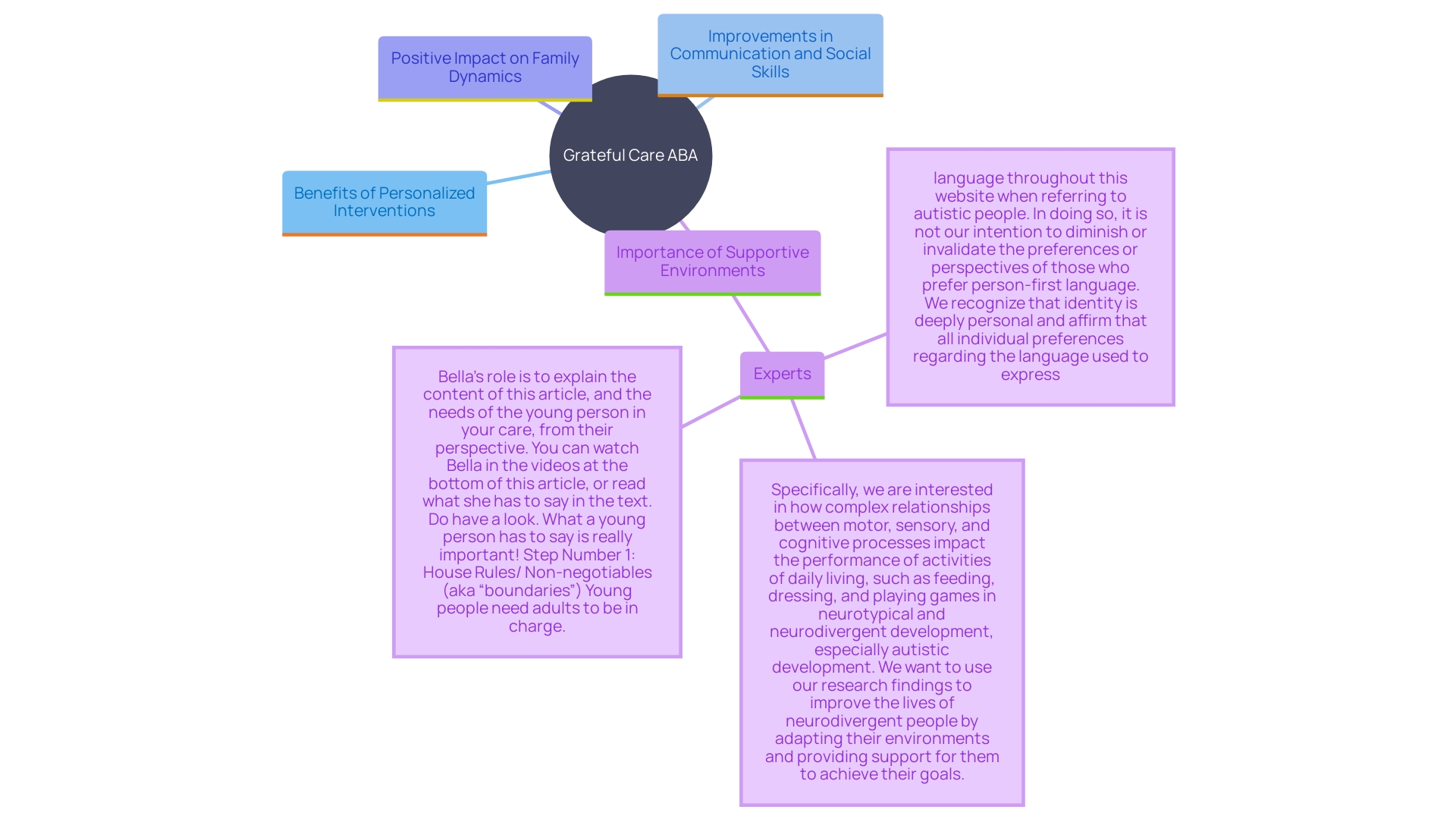
Navigating Insurance Eligibility for ABA Therapy
Navigating insurance eligibility for ABA therapy can be overwhelming for many households. Grateful Care ABA steps in to provide essential resources and support, assisting households in deciphering their insurance options. By offering detailed guidance on necessary documentation and actively advocating for coverage, they aim to ease the financial burden associated with ABA therapy. As Lorri Unumb, CEO of the Council of Autism Service Providers (CASP), emphasizes, “ABA is a highly effective treatment for individuals on the spectrum.”. But it has to be correctly implemented at the highest quality.” With the recent release of the third edition of the ABA Practice Guidelines for the Treatment of Autism Spectrum Disorder, there is now a renewed focus on ensuring that insurance providers adhere to high standards of care. This clarity in understanding insurance benefits empowers families to access the required services without compromising the quality of care, thus fostering better outcomes for children with autism.
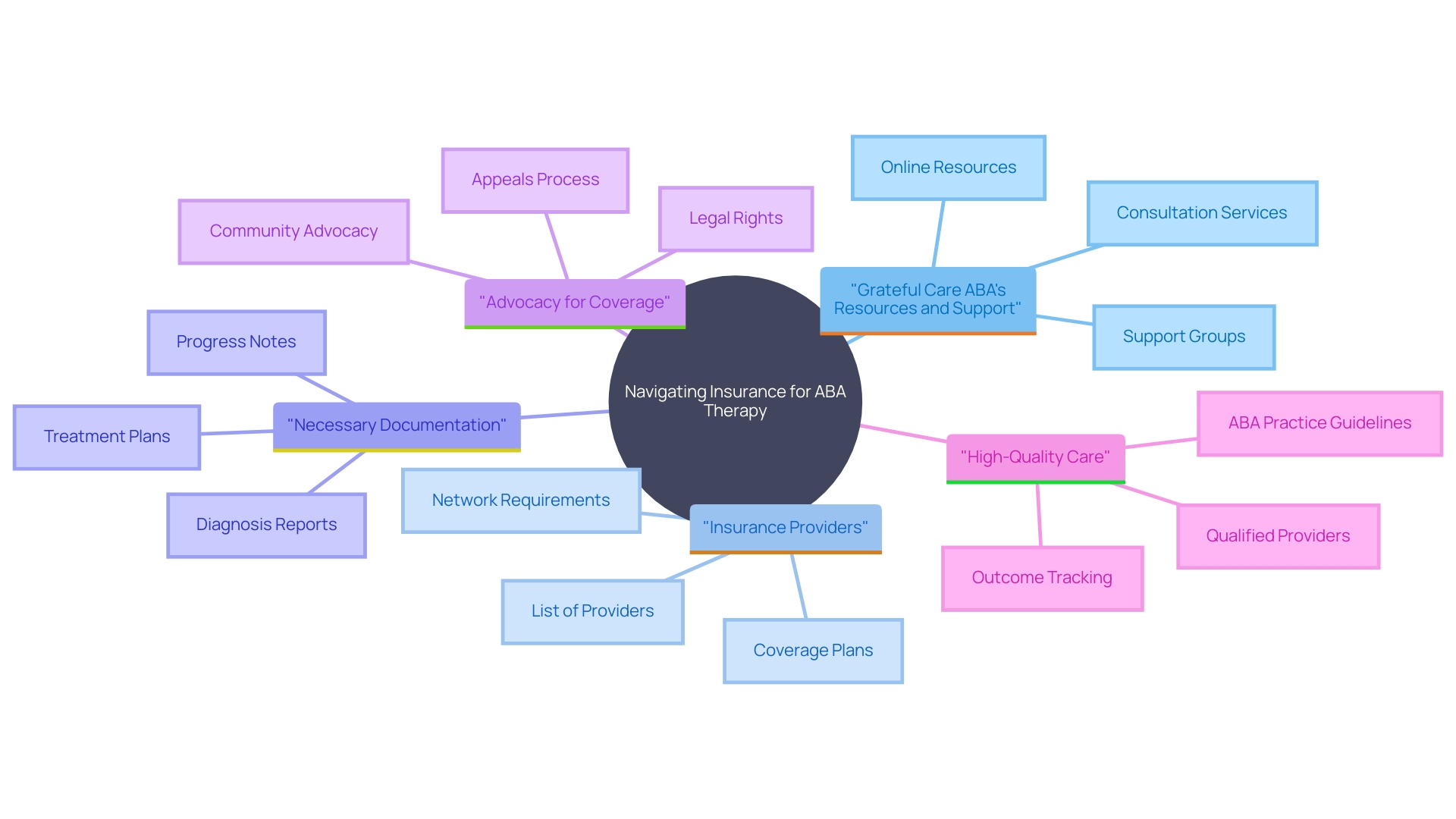
Conclusion
Applied Behavior Analysis (ABA) therapy plays a vital role in supporting individuals with Autism Spectrum Disorder (ASD). By providing tailored interventions, ABA helps children acquire essential life skills, enhance communication, and improve social interactions. The individualized nature of ABA ensures that each child's unique needs are addressed, fostering growth and integration into daily life.
Board Certified Behavior Analysts (BCBAs) contribute significantly by emphasizing goal-setting and consistent monitoring to maximize therapy effectiveness.
Collaboration among families, therapists, and schools is essential for creating a cohesive support system. This teamwork reinforces learned behaviors across various settings, helping children thrive both in therapy and everyday interactions. Personalized care plans reflect the diverse needs of families, ensuring that both the child’s and family’s well-being are prioritized.
The commitment of BCBAs to high-quality, evidence-based practices is crucial for achieving successful outcomes. Continuous professional development ensures families receive the best care possible, fostering an environment where children can flourish. Success stories from Grateful Care ABA demonstrate the transformative impact of personalized interventions, offering hope to families as they see their children progress.
Navigating insurance eligibility for ABA therapy can be daunting, but resources from organizations like Grateful Care ABA empower families to understand their options and advocate for necessary coverage, alleviating financial burdens.
In summary, ABA therapy provides a pathway for meaningful development for children with autism. By emphasizing personalized care and collaboration, the potential for positive change is significant, paving the way for brighter futures for families.




